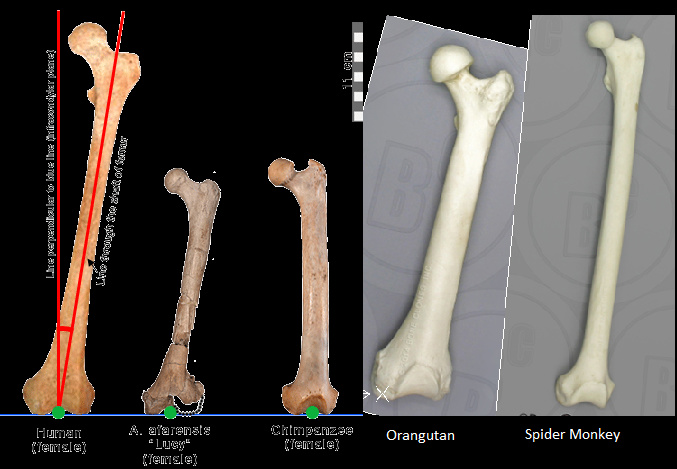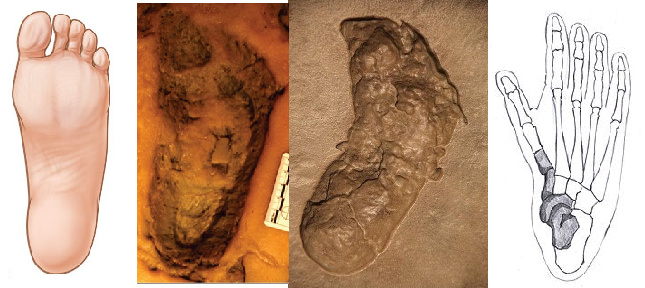Depends on the god. One of the popular ones commanded genocide and slavery.
Those who insist on inerrancy or literalism may be troubled by these issues but I suspect there are good hermeneutical pathways through such difficulties for those determined to find them. Personally though, I don’t believe there was ever a time when the nature of God was laid bare for all to see. Apparently the only way around the hiddenness of God is the belief that God Himself reached through the natural/supernatural membrane to deliver the only official message He deemed necessary. If you believe He established his bonafides at that time and are not bothered that He wouldn’t do more to maintain that same level of transparency on an ongoing basis … then the church and the bible may be the path for you.
Luckily my concept of God owes little to the Bible beyond suggesting the existence of a wise Other who cares about me and others who is intimately aware of my struggles. Having grown up spiritually feral that is the only role for God I feel obliged to defend. To my mind it is a mistake to insist that God must be behind all creation and infinitely powerful. That just makes God seem incompetent whereas I see God as doing His best as an inner counselor. Perhaps He is more than that, but perhaps not.
Jesus said “if you’ve seen me, you’ve seen the Father.” Pretty audacious claim to be sure. If one is a Christ follower, one reads the OT through the lens of Jesus being the clearest demonstration of what God is like. God is the shepherd that looks for the one, leaving the 99. He’s the God who scandalously runs to embrace the prodigal son. And so on.
Yes, many times folks who claim to follow this Jesus person don’t seem to see things the same way as he did. I get that.
That’s one god. There are lots of others. I like yours, and I like you, but that doesn’t erase the god of Robert Jeffress or the scores or hundreds of gods that drool blood.
Not the same thing as “completely indistinguishable.”
You also missed this in Raichlen:
“Most recently, the discovery of 1.5 Ma footprints from Kenya provides new evidence that the Laetoli prints were not completely modern in weight transfer and morphology”
Raichlen showed that A Afarensis bidepalism was more similar to human bipedalism than to non-human ape bipedalism. “Most similar” is not the same thing as identical.
Later, Raichlen states:
" If Au. afarensis did make the Laetoli footprints, then our results support the hypothesis that this species walked with relatively human-like hip and knee extension" [My emphasis]
Finally, it’s worth noting that Raichlen measures the ratio of pressure at toes vs. pressure at heel. Raichlen does not consider other characteristics of the trackways, such as the angle and size of metatarsals. Yet these other characteristics do in fact distinguish the Laetoli trackways from human footprints.
These details are very important. I trust they will help you and other readers understand the fossil evidence better.
Best,
Chris Falter
I haven’t heard of Jeffress, so I’m about to Google him for context - but I have a pretty good suspicion of what I might find.
What’s the saying? God created man in his own image, and man has been returning the favour ever since… ![]()
edit: Google complete. Sigh.
Yes I DO understand that these experts don’t support what I am claiming, and that is why I used them. Far from being a “quote mine” I am using hostile witnesses. But perhaps you are using the “quote mine” accusation to deflect from the issues. Nice try, but it won’t work.
I have shown above that there is now sufficient fossil evidence to show that A. afarensis feet have an abducted great toe and so could not have made the Laetoli prints. Even these experts who would like to see the Laetoli prints as being from A. afarensis admit how human like they are. But they can’t be A. afarensis. The obvious conclusion is that they are so very human like because they were made by humans.
I have seen claims that the knee joint of A. afarensis “proves” that this species was an obligate biped because of the angle between the upper and lower legs. The angle is about 15° compared to humans, 15°, and chimpanzees, 0°. However Orangutans also have an angle of about 15°, and spider monkeys are in between.
Clearly the angle at the knee joint, while consistent with bipedality, is not sufficient by itself to confidently assert it.

(Ogangutan and spider monkey bones from https://boneclones.com/)
Right. The Laetoli footprints provide the strong evidence.
Yes the fossil evidence shows that A afarensis has an abducted big toe. But unfortunately for your assertion, the abducted big toe actually shows that A. afarensis was not human.
How is that? Well it turns out that the big toe of humans is not at all abducted (turned out); rather, it is adducted. Abducted (A afarensis and other non-homonids) vs. adducted (homonids). B vs. D. Opposite meaning.
Here’s a good analysis of the evidence:
The fully adducted hallux in humans is commonly referred to as a non-opposable big toe. In general, human toes are shorter in relative length than in other primates; and comparatively, humans have almost no grasping ability in their toes and feet. However, walking bipedally with longer toes and a divergent hallux would be energetically costly and impede efficient bipedalism, so relatively [short] toe length is likely an adapation of obligate bipedalism.
Evidence from the Laetoli Tracks in Tanzania, where footprints from several australopiths were preserved in volcanic ash, indicates that Australopithecus had relatively short toes, and an intermediately adducted hallux. [emphasis added]
In other words, the Laetoli trackways were made by an intermediate between non-obligate bipedal hominins and homonids. The term we have been using for this kind of fossil is transitional form.
Thus you have yourself presented compelling evidence that A. afarensis is a transitional form that would be classified as a non-homonid hominin, even though you did not at first realize it.
Best,
Chris
I see. So you are more of an expert than the experts in the areas in which they are experts. That’d be great if you can start publishing in the same journals already.
Yep. First Baptist Church of Dallas.
I have bad news for you. You aren’t using hostile witnesses, you are “taking quotes out of context.” If you know the expert says the opposite of what you claim, then making it appear that they support your claim is deceptive. Tell us what the expert said, and tell us why you think they are wrong. That is the honest way to use sources.
Your detailed analysis of pictures of an artist’s reconstruction? Hmmm.
@aarceng You said:
When asked which experts agreed that they match human footprints, you provided three experts who all say they are A. afarensis, but you presented their quotes in such a way that it made it sound like they did not.
Then when you got called on it, you knew they did not agree with you when you quoted them. It is lying to say experts agree with your position and then quote people who don’t agree with you as if they do. This kind of behavior only reinforces the prejudice I have that predisposes me to discount any “evidence” YECs point to as completely untrustworthy. You and your friends at AiG and ICR need to come to terms with the fact that these patterns of dishonesty have damaged your credibility. And you’re not going to build any credibility by continuing with the same deceptive practices. You only weaken your case further.
That is an interesting source. Last updated in 2012.
How do we know that the Laetoli tracks weren’t made by another biped, say a flamingo? Obviously we could look at a flamingo foot and compare it to the tracks and conclude that they don’t match.
Now look at the page you linked. How closely do the foot bones of A. afarensis match the Laetoli prints? The answer is not at all since there are NO afarensis foot bones shown! Not even so much as a fourth metatarsal.
The assertion that the Laetoli tracks were made by A. afarensis is simply supposition that became dogma.
But now we DO have some foot bones that are assigned to Australopiths. Little Foot and Dikika Child/ Selam/Lucy’s Baby. Just have a look at Little Foot’s foot reconstruction which I gave back in #111. Both of these show an abducted great toe and so we can now say that they DO NOT match the Laetoli Tracks.
Actually if you re-read them you will see that although they claimed they were made by A. afarensis they said that they did match human footprints. So in fact the quotes by hostile witnesses supports what I said.
Also note that at the time those quotes were made there were NO skeletal foot remains for A. afarensis so their assertion that they were made by them was simply supposition.
I did re-read them. Your “matched human footprints” was not some sort of scientific declaration that the footprints were made by a member of genus Homo. They were making a point about the close relationship between the transitional species A. afarensis and human ancestors. The fact remains that you totally misrepresented their claims.
Whether it was supposition or not is irrelevant. They are the experts. They asserted the footprints were A. afarensis based on expertise you do not have. You appealed to them as experts, and then pretended they agreed with you and said the footprints were made by a member of the Homo genus. They said no such thing. That’s lying.
The sources you cite do not show what you assert. Not even in the same ballpark, in my estimation.
But since you are convinced that your expertise can turn the whole field of anthropology and its thousands of PhDs on its head, I suggest that you write up your findings and submit them to a peer-reviewed journal. Nobels have been awarded for lesser achievements than yours.
Best,
Chris
That is a very strained sentence, to say the least.
I do not have a PhD in anthropology. But I can look at the evidence and come to a conclusion. The Laetoli prints are a match to human feet and do not match Australopithecine feet.

An exact match? Of course not, since every human foot is slightly different no one human foot will exactly match the footprints made by another. However now that we have fossil Australopithecine it requires a certain kind of expert to continue to assert that they were made by Australopithecines rather than humans.
This criticism does NOT apply to Bruce Latimer and Owen Lovejoy in the quotes above because at that time no fossil foot was available for comparison so they were able to accept the then prevailing proposition that the prints were Australopithecine.
Can we actually be certain that “Lucy” contains only bones from one individual and does not contain bones foreign bones making it a chimera?
For that matter, couldn’t two creatures have stepped in the same spot near enough the same time to account for the weird big toe print? Perhaps some other creature altogether? Is there more than one print?